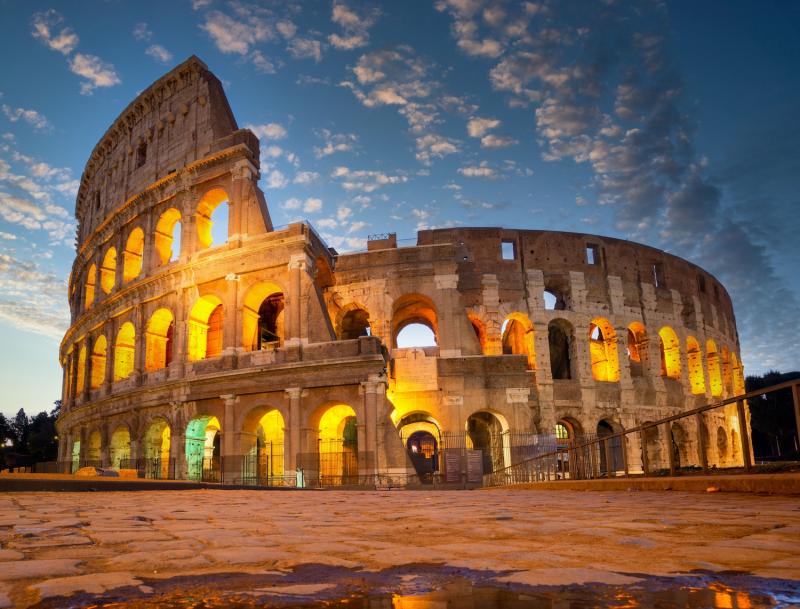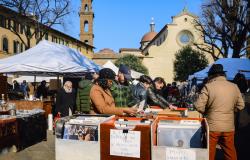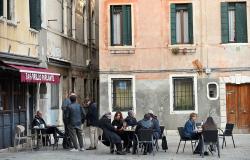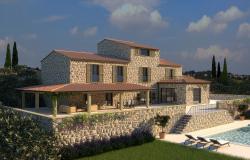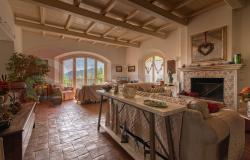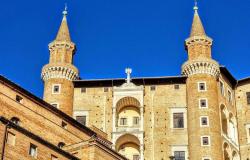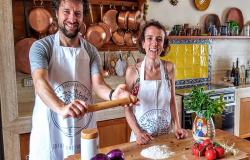You have probably already been to Italy many times and realized that each Italian city has its unique characteristics, but you may still be a bit confused when it comes to talking about your cultural experience in Italy in Italian. This article is going to survey the most prominent Italian architectural styles to give you the necessary vocabulary in order to be able to “fare una bella figura” speaking about places you’ve visited or going to visit next time.
Il Colosseo (Colosseum), initially known as Amfiteatro Flavio is certainly the most well-known monument – il monumento – around the world. It was inaugurated in 80 A.D and hosted the last public spectacle – lo spettacolo – in 523 A.D.
a. C. (Avanti Cristo) – B.C. (Before Christ)
d.C. (Dopo Cristo) – A.D. (Anno Domini)
Il Colosseo is the biggest amphitheatre – l’amfiteatro – in the world, and an example of L’Architettura Romana – The Roman architecture. If you take a look at this magnificent monument, you will see such architectural elements – elementi architettonici -, as:
l’arena – the arena
i sotterranei – the hypogeum
la cavea (le tribune) – the tribunes
il pulvinar – the imperial box
l’arco – the arch
l’arcata - the arcade
Other elements of the Imperial Rome architecture you will see a lot there are gli archi di trionfo – the triumphal arches , and le colonne onorarie – the honorary columns. Such details as affreschi – frescoes – and mosaici – mosaics, are also an essential part of the Roman Art not to miss.
Centuries after that, from the late 12th to the 16th century, will bring to light the masterpiece – il capolavoro – of the gothic architecture in Italy – Il Duomo di Milano – Milan cathedral.
Duomo is the word used to describe the main church – la chiesa, mainly a cathedral – la cattedrale – of a city.
Being an example of high and late Middle ages - Il Medioevo , L’architettura gotica, is characterized by such elements, as:
la vetrata – stained glass windows
il traforo - tracery
l’arco a sesto acuto – pointed arch
la guglia – spire
Every year millions of people come to Florence to witness the marvel of the Cathedral of Santa Maria del Fiore. Situated on the main square of the city – la piazza centrale – this richly decorated cathedral is known all over the world as an example of the Italian Renaissance – il Rinascimento.
What particularly makes this church stand out among the others is La cupola del Brunelleschi, named so after the architect – l’architetto – who created something never done before him. La cupola – the dome – of the cathedral is the largest masonry dome in the world.
The technique used by Brunelleschi allow the brick self-reinforce as it was being laid so that the bricks – i mattoni - wouldn’t fall once the wall becomes inclined. Abundantly decorated walls – i muri – and the facade – la facciata – of the cathedral boast vivid colors and multiple intricate details. A beautiful detail inherited from the gothic architecture are the rose windows – i rosoni.
L’architettura barocca (The Baroque architecture), being also widely spread all over Italy, is defined by exuberance and by contrast – il contrasto. A great example of the Baroque architecture is la Basilica di Superga, located on the highest hill of Turin. Built by Filippo Juvarra, the basilica was inaugurated in 1731 to become later a tomb – una tomba – of the Royal family of Savoy. Those who see the basilica for the first time often remain struck by the grandeur – la grandezza – of the construction. This and the classical lines – le linee classiche – contribute to the solid yet very details image of the church. The entrance – l’entrata – of the Basilica di Superga is decorated with eight columns, while the perimeter of the facade is enhanced by le semicolonne (semicolumns). Visitors have a possibility to go up to the balcony – il balcone – which surrounds the dome to give a closer look at the two bell towers of the church – i campanili – and of course to enjoy the view of Turin – la vista/ il panorama.
Another particular architectural style typical for some areas of Turin is Lo stile Liberty. Known in the world as Art-Nouveau, in Italy it becomes initially famous as lo stile floreale (lit. the floral style), which actually represents the main idea of the style. Opposed to the industrialization at the end of the 19th and the beginning of the 20th century, lo stile Liberty focused on the idea of beauty – la bellezza.
This architectural style is defined by forme curvilinee (curvilinear shapes) and a lot of animal and floral motifs – i motivi animali e floreali.
Nowadays, ideas are expressed and shared through a variety of forms of l’architettura contemporanea (Contemporary architecture), which make possible the realization of the most bold projects. When it comes to searching new shapes in art and architecture, Milan has always been among the most progressive cities of Italy. In fact, it has recently become famous for such projects as, for example, “il bosco verticale” (lit. the vertical forest), and “la piazza Gae Aulenti”, named after the architect. Besides opting for continuous experiments with forms, l’architettura contemporanea pays a lot of attention to the materials – i materiali, trying to use where possible eco-friendly options – opzioni ecosostenibili:
il legno – wood
il marmo – marble
la pietra – stone
il vetro – glass
la plastica biodegradabile – biodegradable plastic
As you may remember from one of our previous articles, in Italian the preposition “di” is used when you want to say that some object is made of something:
le colonne di marmo – Marble columns
il tetto di legno – wooden roof
le pareti di pietra – stone walls
Italian architecture has a long and rich history, this article gives only an idea on how you can keep up a conversation about the main architectural styles without going too deep into details. Try to put the given vocabulary into practice next time you will tell someone about your cultural experience in Italy and keep making new discoveries with us!
